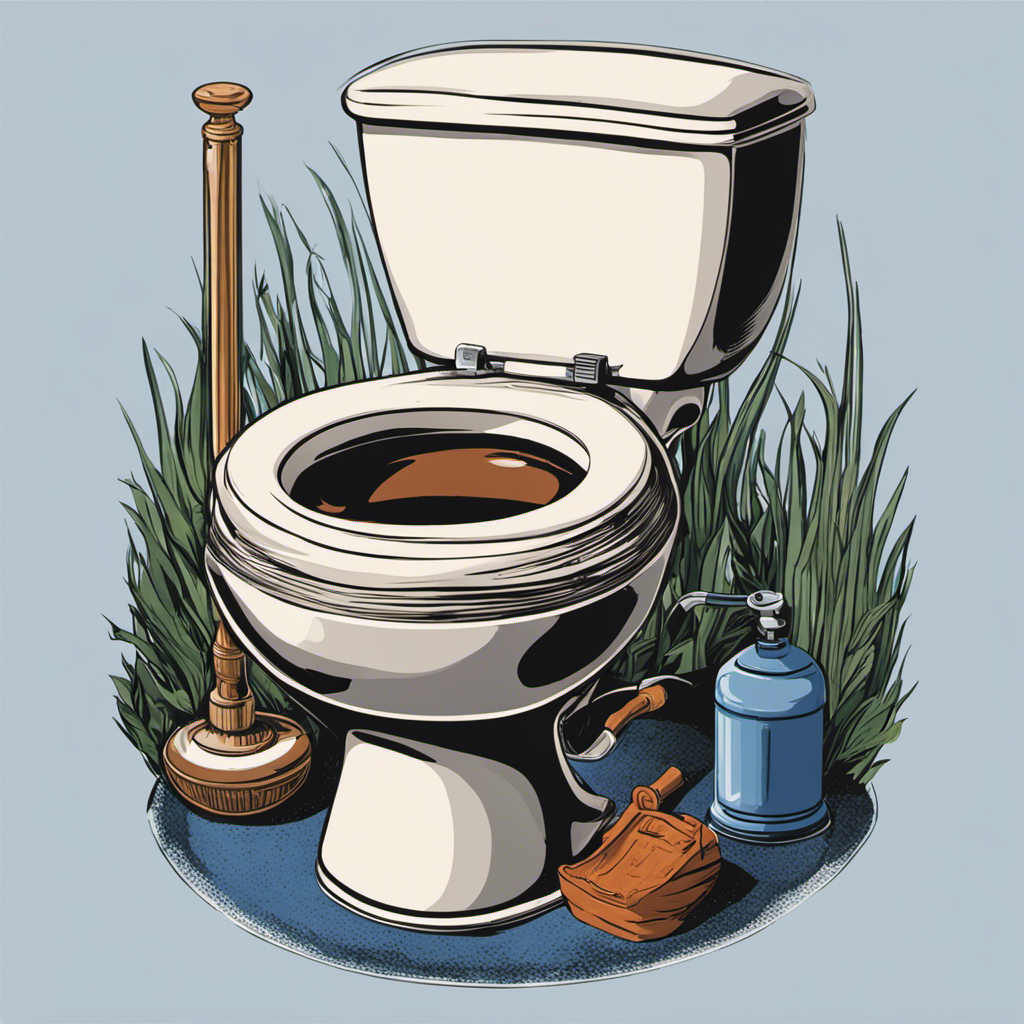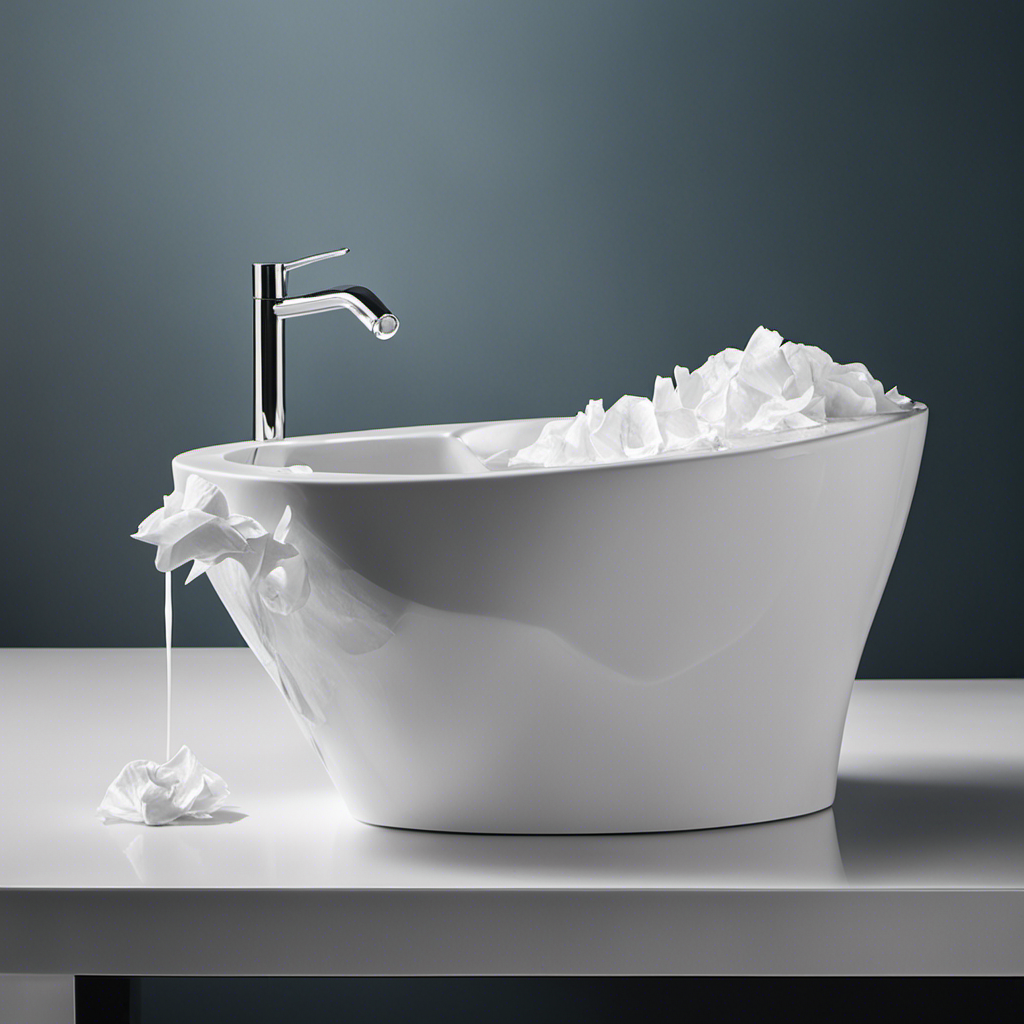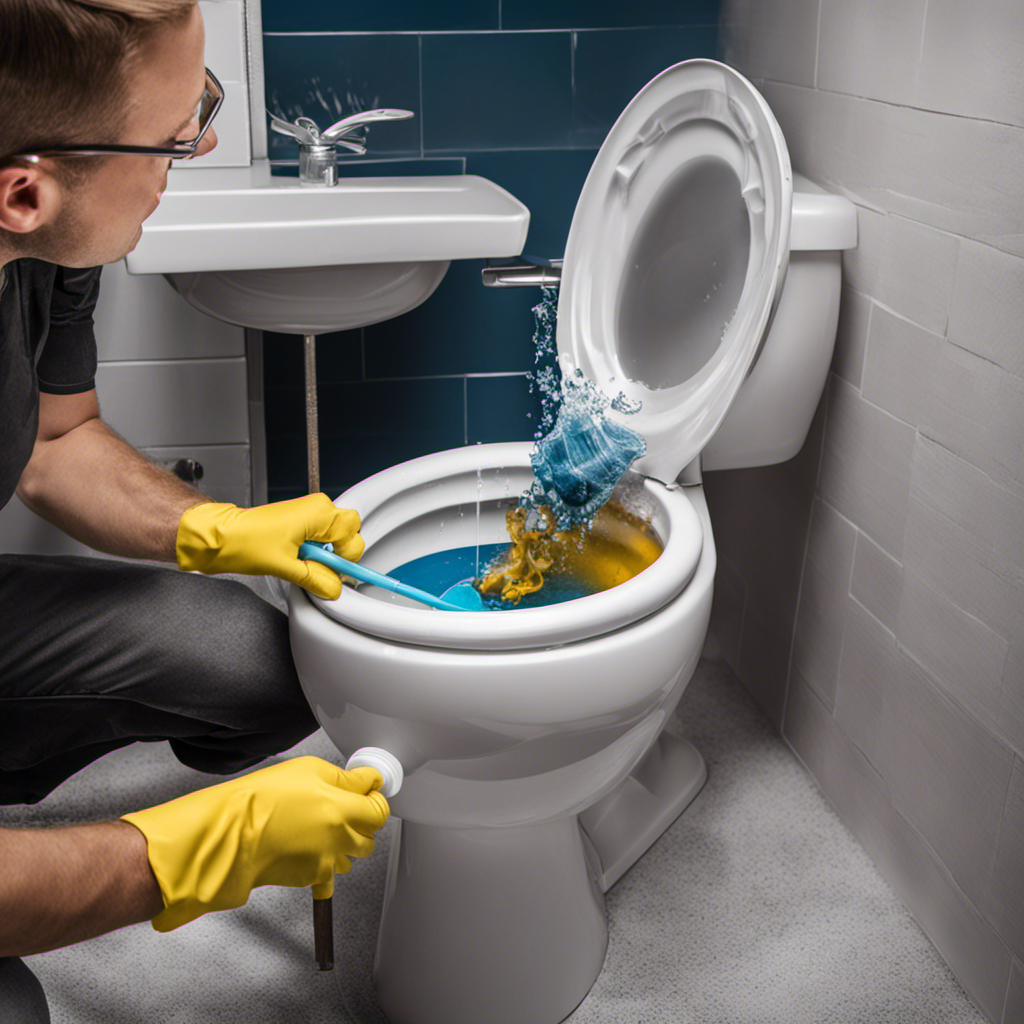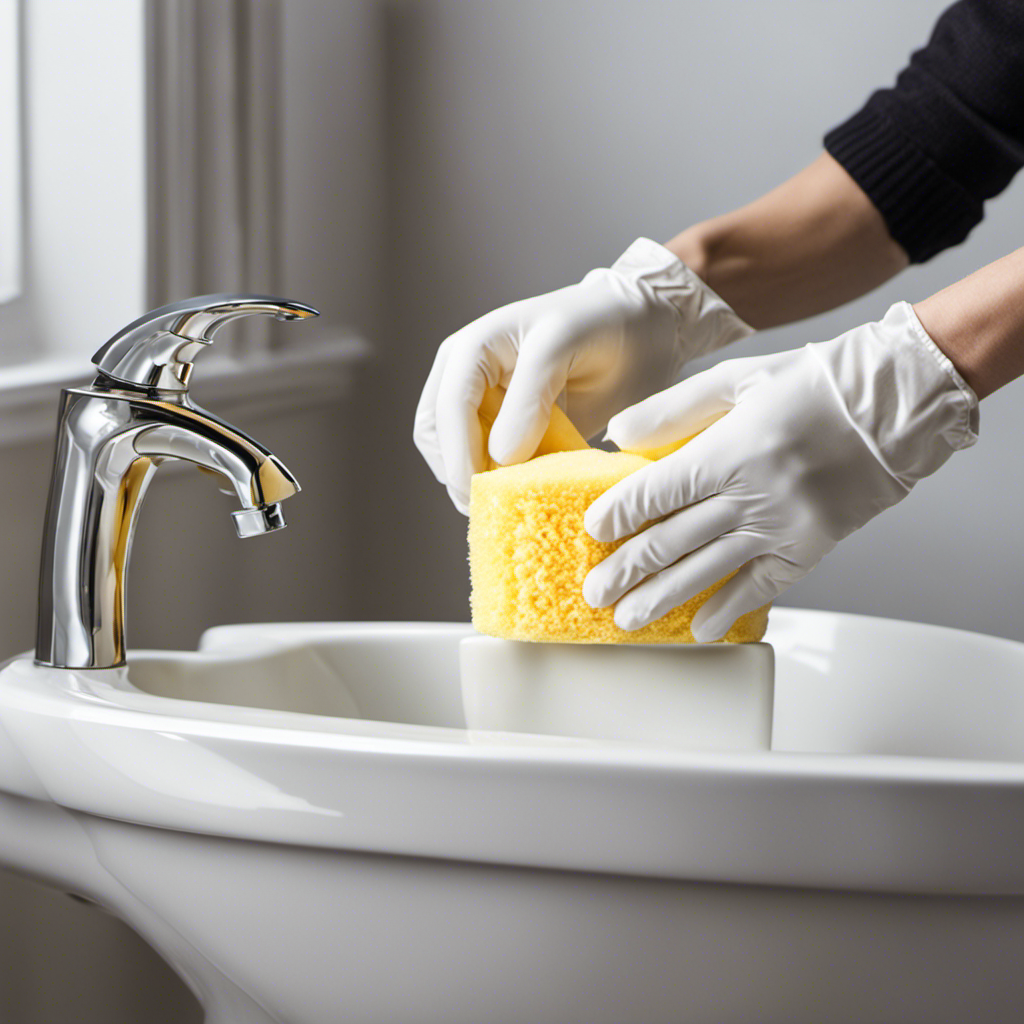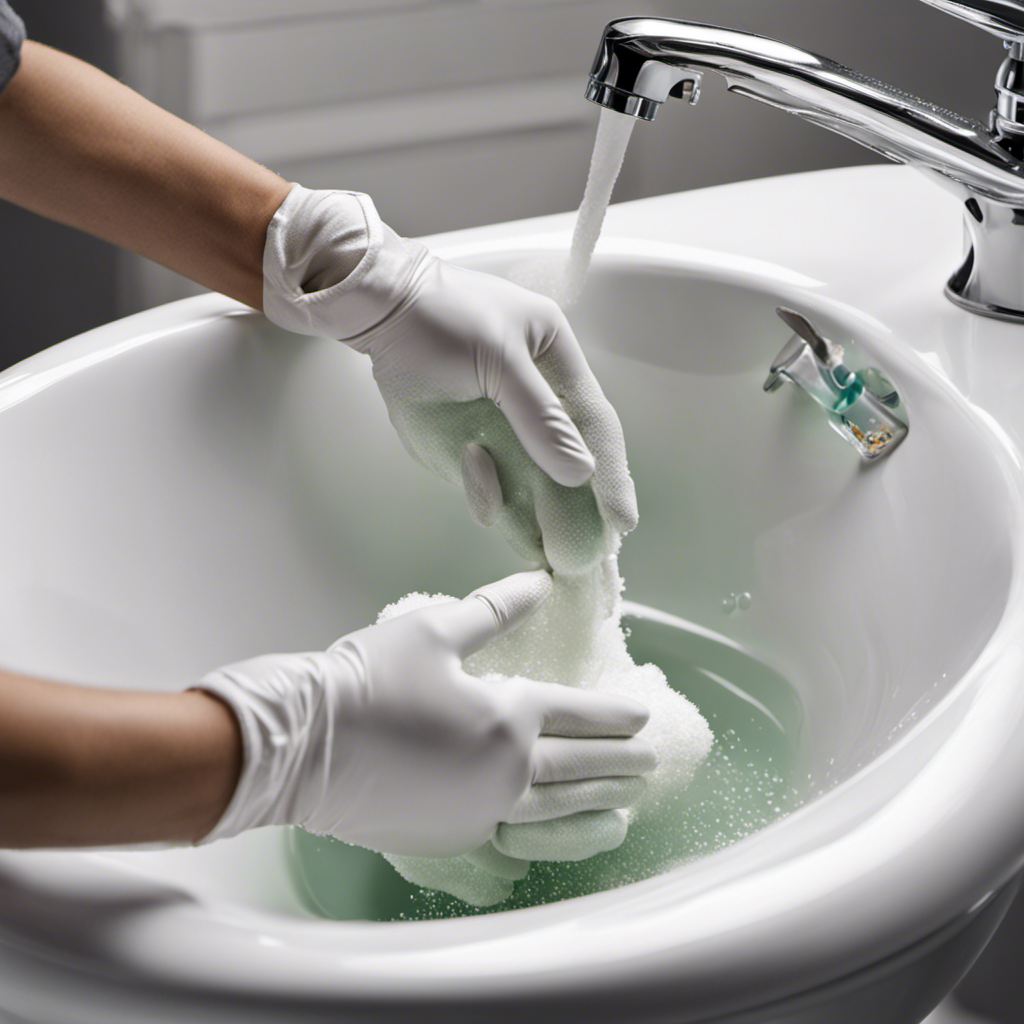FAQ - Advanced Bathroom Queries
How Do You Fix a Broken Toilet Flush

We’ve all experienced it – the frustration of a malfunctioning toilet flush that simply refuses to work properly. However, there’s no need to worry, as in this article, we will guide you through the exact steps to repair it.
With our step-by-step guide, you’ll be able to assess the problem, gather the necessary tools, and confidently tackle the issue.
So, let’s roll up our sleeves and get ready to restore that flush to its former glory. You’ve got this!
Key Takeaways
- Observe and identify visible issues with the toilet flush.
- Gather necessary tools such as a plunger, toilet auger, adjustable wrench, rubber gloves, and bucket.
- Shut off the water supply and empty the toilet tank before proceeding with any repairs.
- Clean or replace the flapper valve, check and adjust the fill valve, and inspect the chain or lift wire for any issues.
Assess the Problem
To assess the problem with a broken toilet flush, we need to start by observing and identifying any visible issues. This is the first step in troubleshooting common toilet problems.

Begin by inspecting the flush handle and lever to ensure they’re properly connected and functioning. Check for any loose or broken parts, such as a cracked handle or a disconnected chain.
If everything appears intact, the next step is to remove the tank lid and examine the inside components. Look for any signs of damage or blockage, such as a broken flapper or a clogged flush valve.
Additionally, check for water leaks around the base of the toilet or any unusual noises during flushing.
Gather Necessary Tools
Now that we’ve assessed the problem with our broken toilet flush, it’s time to gather the necessary tools to fix it.
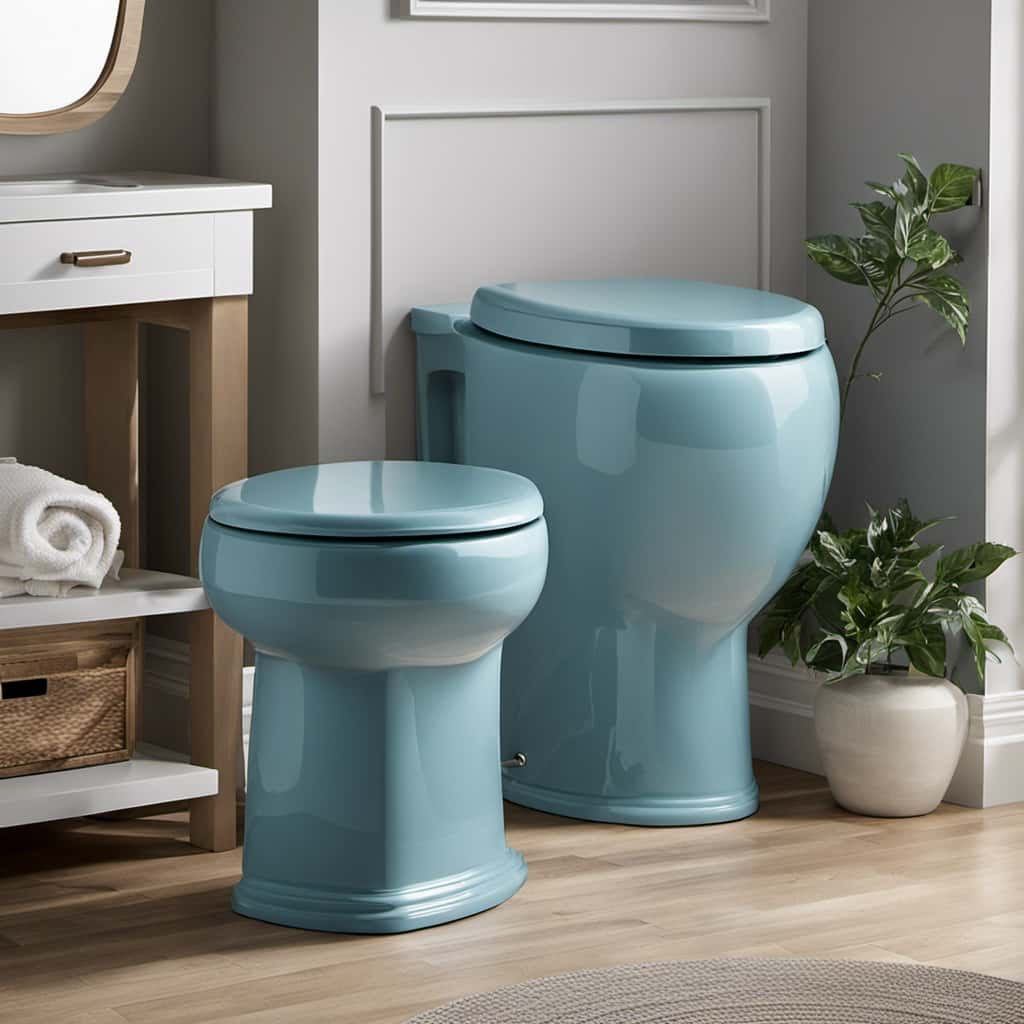
There are a few common toilet problems that we might encounter, such as a weak flush or a toilet that won’t flush at all. By troubleshooting the toilet flush, we can determine the specific tools we’ll need for the job.
Let’s get ready to tackle this issue step by step.
Common Toilet Problems
We will gather the necessary tools for fixing common toilet problems. Here is a list of essential tools:
- Plunger: A plunger is an indispensable tool for clearing toilet clogs. It creates a suction that dislodges any blockages in the pipes.
- Toilet Auger: If the plunger fails to unclog the toilet, a toilet auger can come to the rescue. This tool has a flexible cable that can reach deep into the pipes to remove stubborn clogs.
- Adjustable Wrench: A wrench is useful for tightening or loosening bolts and nuts that secure the toilet tank or bowl. It can help fix toilet leaks caused by loose connections.
- Rubber Gloves: It’s crucial to wear rubber gloves when handling toilet repairs to protect yourself from germs and bacteria.
Troubleshooting Toilet Flush
To troubleshoot a broken toilet flush, let’s gather the necessary tools. Proper maintenance of the toilet flush is crucial to avoid issues. Before starting the troubleshooting process, ensure you have the following tools:

- A plunger: useful for unclogging any obstructions in the toilet drain.
- A toilet auger: can be used to clear deeper blockages.
- A bucket: will come in handy to collect any excess water during the troubleshooting process.
- A wrench: essential for tightening or loosening any loose connections.
- A pair of gloves: wearing gloves will protect your hands from any debris or bacteria.
With these tools ready, we can now move on to the next step in troubleshooting the toilet flush.
Shut off the Water Supply
To shut off the water supply, locate the valve near the base of the toilet and turn it clockwise. This is an essential step when troubleshooting water flow issues or repairing leaks in the toilet. Here’s a step-by-step guide to shutting off the water supply:
- Find the valve: Look for a small, round valve located near the floor or wall behind the toilet. It’s usually on the left side, and it may be labeled as the water shut-off valve.
- Turn off the water: Using your hand or a pair of pliers, grip the valve handle and turn it clockwise until it stops. This will shut off the water supply to the toilet.
- Test the shut-off: Flush the toilet to ensure that the water flow has been completely stopped.
- Check for leaks: After shutting off the water supply, inspect the area around the valve for any signs of leaks or drips.
With the water supply shut off, we can now move on to the next step: emptying the toilet tank.
Empty the Toilet Tank
Now let’s move on to the next step in fixing a broken toilet flush: emptying the toilet tank. This step is important to ensure that we can work on the tank without any water getting in the way.

To empty the tank, we need to start by removing excess water. This can be done by flushing the toilet and holding down the handle to drain as much water as possible.
Once the excess water is removed, we can then proceed to check for any blockages that may be causing the issue.
Removing Excess Water
We can empty the toilet tank by draining the excess water. To troubleshoot leaks and fix float issues, follow these steps:
- Turn off the water supply: Locate the shut-off valve near the base of the toilet and turn it clockwise to stop the water flow.
- Flush the toilet: Press and hold the handle down to flush the toilet. This will remove most of the water from the tank.
- Remove remaining water: Use a sponge or towel to soak up any remaining water in the tank. Make sure to wring out the excess water into a bucket or sink.
- Empty the tank: To completely empty the tank, locate the tank bolts at the bottom of the tank and unscrew them. Carefully lift the tank off the bowl and pour out any remaining water.
Checking for Blockages
After emptying the toilet tank, the next step is to check for any blockages that may be causing the broken toilet flush. Blockages can occur in the drain pipe or in the toilet bowl itself. To unblock the drains, you can start by using a plunger. Place the plunger over the drain hole in the toilet bowl and push down firmly, then pull up quickly. Repeat this motion several times to create suction and dislodge any blockages.

If the plunger doesn’t work, you may need to try a toilet auger or call a professional plumber for assistance. Once you have successfully unblocked any drains, you can move on to inspecting the flush mechanism.
Inspect the Flush Mechanism
Once you have identified a broken toilet flush, the next step is to inspect the flush mechanism using a flashlight and a screwdriver. Here are some troubleshooting tips and common fixes to help you in the process:
- Remove the tank lid: Carefully lift the tank lid and set it aside to expose the inner workings of the flush mechanism.
- Check the chain: Ensure that the chain connecting the handle to the flapper valve is properly connected and not tangled or loose.
- Examine the flapper valve: Inspect the flapper valve for any signs of wear or damage. Look for cracks, warping, or mineral buildup that may be preventing a proper seal.
- Test the flush handle: Press the flush handle and observe if it’s engaging with the flush mechanism. If not, the handle may need to be adjusted or replaced.
Once you have completed the inspection of the flush mechanism, you can proceed to the next step of cleaning or replacing the flapper valve.
Clean or Replace the Flapper Valve
When it comes to fixing a broken toilet flush, one important step is to clean or replace the flapper valve.

The flapper valve is responsible for controlling the flow of water from the tank to the bowl. Over time, the flapper valve can become worn out or dirty, leading to issues with flushing.
In this discussion, we’ll cover the maintenance of the flapper valve and troubleshoot common problems that may arise.
Flapper Valve Maintenance
To maintain the flapper valve, we clean or replace it as needed. Here are some tips for troubleshooting and replacing the flapper valve:
- Troubleshooting: If your toilet has a weak flush or is constantly running, it may be due to a faulty flapper valve. Check for any visible signs of damage or wear on the flapper valve, such as cracks or deterioration.
- Cleaning the Flapper Valve: Start by turning off the water supply to the toilet. Remove the flapper valve and clean it thoroughly with warm water and mild soap. Check for any mineral deposits or debris that may be affecting its performance. Rinse and dry the flapper valve before reinstalling it.
- Replacing the Flapper Valve: If the flapper valve is beyond repair, it’s time to replace it. Turn off the water supply and flush the toilet to empty the tank. Remove the old flapper valve by disconnecting it from the chain and unscrewing any mounting hardware. Install the new flapper valve, ensuring a proper fit and connection.
- Testing and Adjusting: After cleaning or replacing the flapper valve, turn on the water supply and let the tank refill. Test the flush to ensure the flapper valve is working correctly. If necessary, adjust the chain length to ensure a proper seal and smooth flush.
Troubleshooting Common Issues
To troubleshoot common issues with a broken toilet flush, we need to clean or replace the flapper valve as necessary. The flapper valve is an essential component that controls the water flow from the tank into the bowl when you flush. Over time, it can become dirty or worn out, leading to problems such as weak flushes or constant running water.
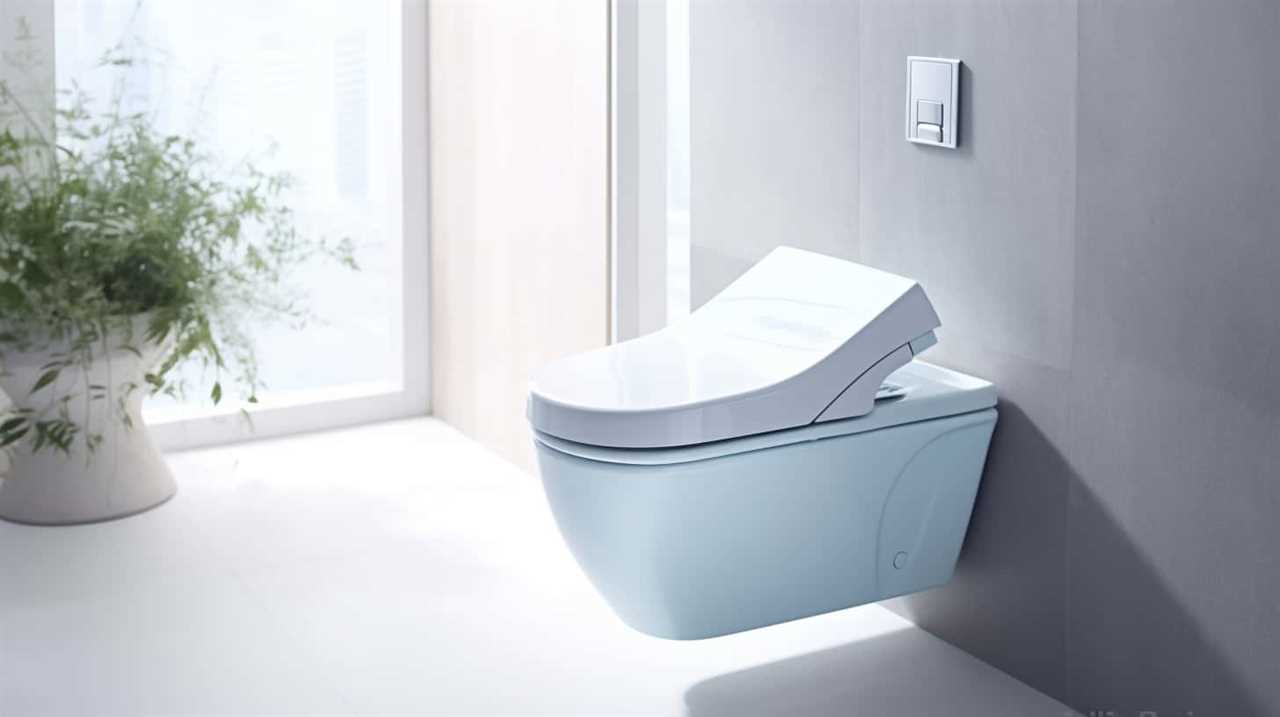
To clean the flapper valve, start by turning off the water supply to the toilet and flushing to empty the tank. Then, remove the flapper valve by disconnecting it from the chain and unscrewing any retaining bolts. Soak the valve in a mixture of water and vinegar for about 30 minutes to remove any mineral deposits. Afterward, scrub it gently with a soft brush to clean off any remaining debris.
If cleaning doesn’t solve the issue, it may be necessary to replace the flapper valve. To do this, turn off the water supply and flush to drain the tank. Remove the old flapper valve in the same way as before and take it to a hardware store to find a suitable replacement. Install the new flapper valve according to the manufacturer’s instructions, making sure it fits securely and creates a proper seal.
Check the Fill Valve
We should start by examining the fill valve to determine if it’s the cause of the broken toilet flush. Here are the steps to check the fill valve:
- Turn off the water supply: Locate the shut-off valve near the base of the toilet and turn it clockwise to shut off the water.
- Remove the tank lid: Lift the lid off the toilet tank and set it aside.
- Inspect the fill valve: Look for any signs of damage or wear on the fill valve. If you notice any cracks or leaks, it may be necessary to replace the fill valve.
- Adjust the float: If the fill valve appears to be in good condition, check the positioning of the float. Ensure that it’s properly adjusted to control the water level in the tank.
Adjust or Replace the Fill Valve
Let’s determine if adjusting or replacing the fill valve will solve the issue with our broken toilet flush.

The fill valve is responsible for refilling the toilet tank after each flush. If you notice that the water level in the tank is too high or too low, you may need to repair or replace the fill valve.
To adjust the water level, locate the adjustment screw or float rod on the fill valve. Turn the screw clockwise to lower the water level or counterclockwise to raise it.
If adjusting the fill valve doesn’t solve the problem, it may be necessary to replace it. To replace the fill valve, shut off the water supply to the toilet, disconnect the water supply line, and remove the old fill valve. Install the new fill valve following the manufacturer’s instructions.
Adjusting or replacing the fill valve should resolve the issue with your broken toilet flush.

Inspect the Chain or Lift Wire
To inspect the chain or lift wire, check for any signs of damage or misalignment. Here are the steps to follow:
- Inspect the float arm: Ensure that the float arm is properly connected to the lift wire. Look for any bends, cracks, or other signs of damage. If there are any issues, adjust or replace the float arm as needed.
- Check the flush handle: Examine the flush handle to make sure it’s securely attached to the lift wire. Test the handle to ensure it moves smoothly and without resistance. If the handle is loose or the lift wire is damaged, tighten or replace the handle accordingly.
- Inspect the chain: If your toilet uses a chain instead of a lift wire, inspect it for any kinks, twists, or breaks. Adjust or replace the chain if necessary, ensuring it has the right amount of slack to allow for proper flushing.
- Check for misalignment: Make sure the chain or lift wire is properly aligned with the flapper or flush valve. Adjust the position if needed to ensure smooth operation.
Adjust or Replace the Chain or Lift Wire
After inspecting the chain or lift wire for any damage or misalignment, the next step is to adjust or replace it as necessary.
To adjust the chain, start by locating the chain’s attachment point on the flush lever. If the chain is too loose, simply move the attachment point to a higher link on the chain. On the other hand, if the chain is too tight, move the attachment point to a lower link. Ensure that there’s just a slight amount of slack in the chain, allowing it to move freely without being too loose.
If adjusting the chain doesn’t solve the problem, it may be necessary to replace the lift wire. To do this, detach the old lift wire from the flush lever and tank lever, and then install the new one by attaching it to both levers securely.

Once the chain or lift wire has been adjusted or replaced, proceed to the next step: testing the flush.
Test the Flush
We can now test the flush to determine if the adjustments or replacements have resolved the issue. Follow these troubleshooting tips and maintenance techniques to ensure a thorough test:
- Fill the toilet tank with water: Slowly pour water into the tank until it reaches the fill line. This will simulate a normal flush.
- Push the flush lever: Gently press down on the flush lever and observe the water flow. If the flush is weak or incomplete, further adjustments may be needed.
- Repeat the flush: Perform multiple flushes to ensure consistent results. Pay attention to any signs of improvement or recurring issues.
- Observe the water level: After each flush, check if the water level in the tank returns to the correct level. If it doesn’t, there may be a problem with the fill valve or flapper.
Reassemble the Toilet Tank
Once the flush has been tested and adjustments or replacements have been made, it’s important to reassemble the toilet tank to complete the repair process. Follow these troubleshooting steps for a successful reassembling process.
- Start by placing the rubber gasket onto the flush valve opening at the bottom of the tank. Ensure it’s properly seated and forms a tight seal.
- Carefully lower the tank onto the bowl, aligning the bolts on the bottom of the tank with the corresponding holes on the bowl.
- Secure the tank to the bowl by tightening the nuts onto the bolts, alternating between each side to ensure even pressure.
- Reattach the water supply line to the fill valve by screwing it on tightly. Double-check for any leaks.
- Finally, connect the chain from the flush handle to the lift arm on the flush valve.
With the toilet tank successfully reassembled, it’s now time to turn on the water supply and test the flush once again.
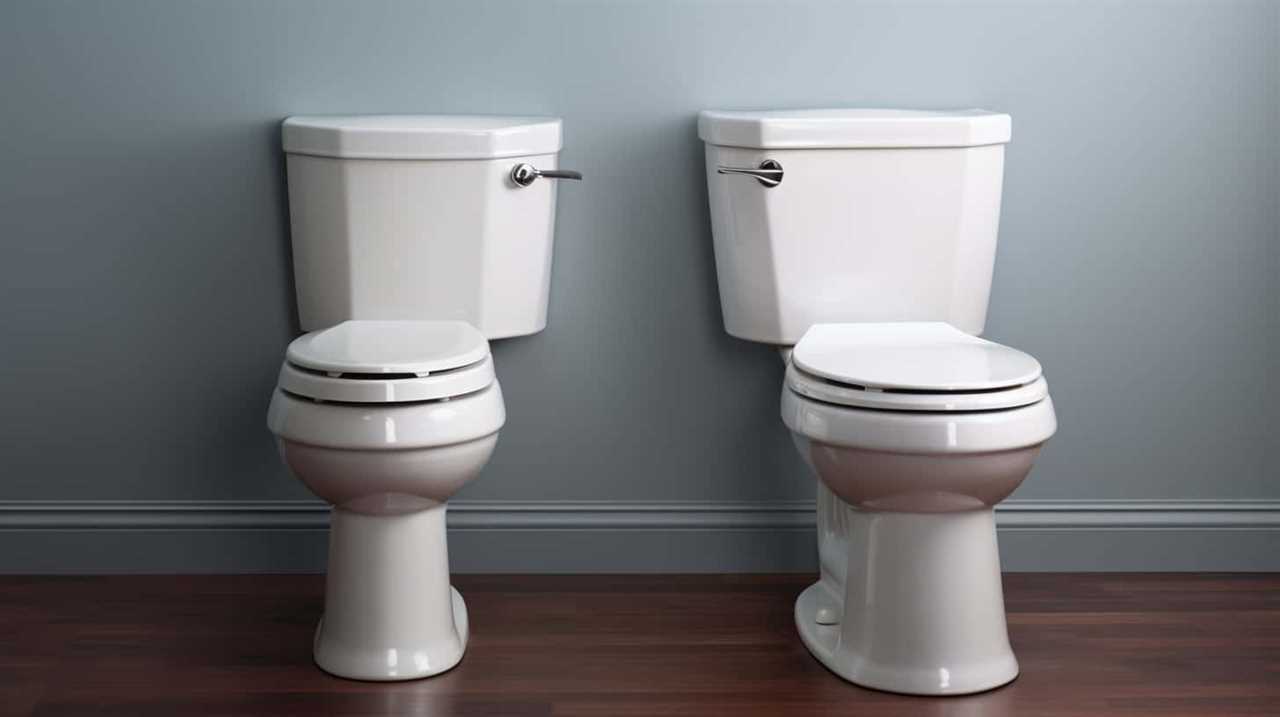
Turn on the Water Supply
Now that the toilet tank has been successfully reassembled, it’s important to turn on the water supply to complete the repair process.
Follow these steps to troubleshoot water pressure and fix a leaking toilet:
- Locate the shut-off valve: Look for a valve near the base of the toilet or on the wall behind it. Turn it counterclockwise to open the valve.
- Check the water flow: Once the valve is open, listen for the sound of water flowing into the tank. If there’s no flow, the valve may be faulty or closed elsewhere in the plumbing system.
- Inspect for leaks: Look for any signs of water leakage around the base of the toilet or from the supply line connection. If you notice any leaks, tighten the connections or replace faulty parts.
- Test the flush: Flush the toilet to ensure that the water fills the tank properly and there are no more leaks. Adjust the water level if necessary by using the fill valve adjustment screw.
Conclusion
And there you have it, folks! Fixing a broken toilet flush is as easy as following these simple steps.
By assessing the problem, gathering the necessary tools, and inspecting the flush mechanism, you can quickly identify and resolve any issues.

Don’t forget to test the flush and reassemble the toilet tank before turning on the water supply.
Now you can bid farewell to those pesky flush problems and get back to enjoying a fully functional bathroom.
Remember, keep calm and flush on!
With an impeccable eye for detail and a passion for bathroom-related, Ava leads our editorial team gracefully and precisely.
Under her guidance, Best Modern Toilet has flourished as the go-to resource for modern bathroom enthusiasts. In her free time, you might find Ava exploring antique shops and looking for vintage bathroom fixtures to add to her collection.
FAQ - Advanced Bathroom Queries
Can You Flush the Toilet Paper in Italy

Have you ever wondered if it’s okay to flush toilet paper in Italy? Here’s the lowdown: plumbing practices in Italy may vary from what you’re used to.
We’ve all experienced those moments of uncertainty in unfamiliar bathrooms, right? But fear not, because we’re here to shed some light on this cultural quirk.
In this article, we’ll explore the ins and outs of toilet paper disposal in Italy and offer some handy tips for navigating public restrooms like a pro.
So, let’s dive in!
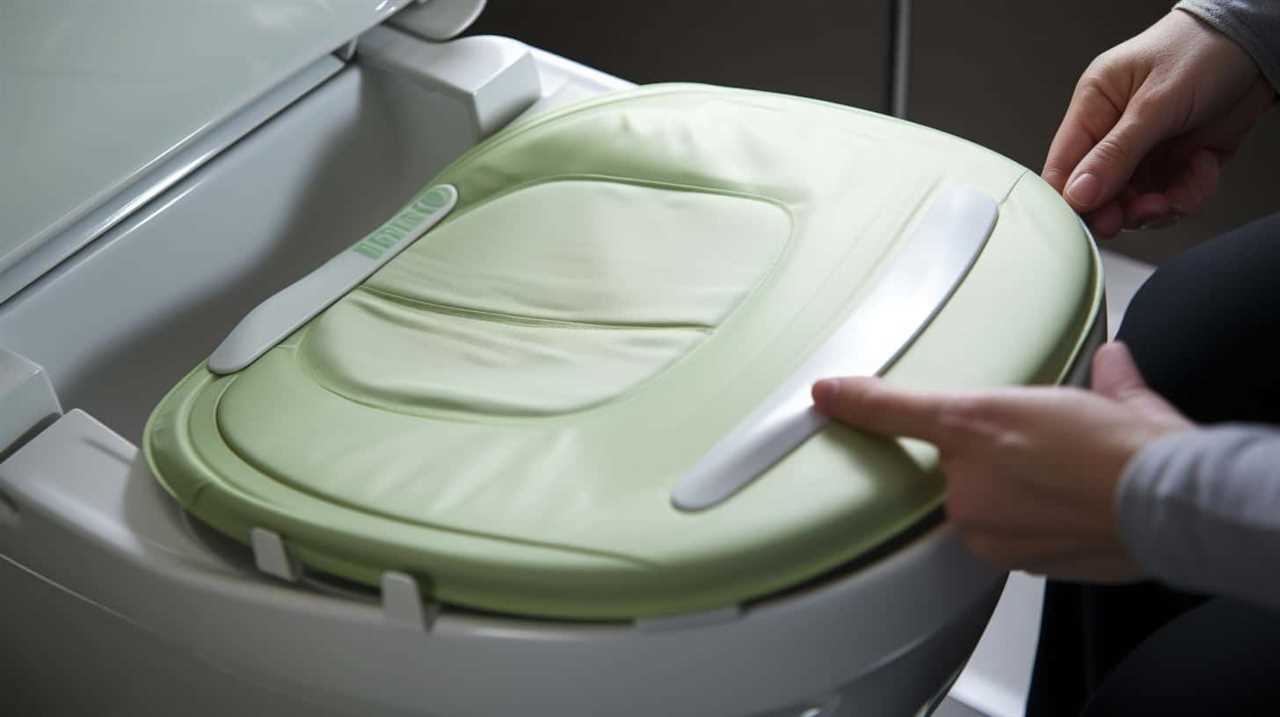
Key Takeaways
- Italian plumbing systems are designed to handle the disposal of toilet paper without any issues.
- In many parts of Italy, the plumbing systems aren’t designed to handle toilet paper, so it is not flushed.
- Italians often dispose of used toilet paper in a waste bin next to the toilet instead of flushing it.
- Proper toilet paper disposal in Italy contributes to the preservation of the country’s historic buildings and protects the delicate plumbing infrastructure.
Plumbing System in Italy
In Italy, the plumbing system allows us to flush toilet paper down the toilet. This convenience isn’t only practical but also has important maintenance and environmental implications.
When it comes to maintenance, Italian plumbing systems are designed to handle the disposal of toilet paper without any issues. The pipes and sewer systems are built to efficiently transport and process waste, including toilet paper, preventing clogs and blockages. This is a testament to the advanced engineering and infrastructure in the country.
From an environmental perspective, allowing the flushing of toilet paper reduces the need for alternative disposal methods such as trash bins or separate waste systems. It also minimizes the risk of contamination and the spread of bacteria.
However, cultural differences in toilet paper disposal exist, which we’ll explore in the next section.

ARTICLE TRANSITION:
Now that we’ve discussed the plumbing system in Italy, let’s delve into the cultural differences in toilet paper disposal.
Cultural Differences in Toilet Paper Disposal
Let’s explore the cultural differences that exist when it comes to disposing of toilet paper in Italy. Toilet paper etiquette in Italy is quite different from what most of us are accustomed to.
- Do Not Flush: In many parts of Italy, the plumbing systems aren’t designed to handle toilet paper. Instead of flushing it down the toilet, Italians often dispose of used toilet paper in a waste bin next to the toilet.
- Bin Placement: It’s important to note that these waste bins are usually lined with plastic bags, which are replaced regularly to maintain cleanliness.
- Odor Control: To minimize any unpleasant smells, it’s common for Italians to use scented garbage bags and air fresheners in the bathroom.
Understanding these cultural differences in toilet paper disposal is crucial to avoid any plumbing mishaps during your visit to Italy.
Now, let’s explore some alternative methods of toilet paper disposal.

Alternative Methods of Toilet Paper Disposal
We can explore some alternative methods of toilet paper disposal in Italy. While flushing toilet paper is not the norm, there are sustainable options available. One popular method is using a bidet, which is a separate water basin used for cleaning oneself after using the toilet. Bidets are commonly found in Italian bathrooms and offer a hygienic and eco-friendly alternative to toilet paper. Another option is to use toilet paper specifically designed for disposal in waste bins, rather than flushing it. These specially-made toilet paper products are biodegradable and can be safely discarded in the bins provided. By utilizing these alternative methods, Italians are able to reduce their environmental impact while maintaining cleanliness. Speaking of cleanliness, let’s now move on to some tips for using public restrooms in Italy.
| Sustainable Options | Bidet Usage |
|---|---|
| Hygienic | Water-based |
| Eco-friendly | Reduces waste |
| Common in Italy | Alternative to toilet paper |
| Biodegradable | Clean and refreshing |
| Reduces environmental impact | Promotes personal hygiene |
Now that we’ve explored alternative methods of toilet paper disposal, let’s dive into some tips for using public restrooms in Italy.
Tips for Using Public Restrooms in Italy
Moving on to using public restrooms in Italy, there are a few tips that can help ensure a pleasant experience.
- Practice good hand hygiene: Always carry hand sanitizer or antibacterial wipes, as not all restrooms may have soap or paper towels available.
- Follow proper toilet etiquette: Italians are serious about keeping restrooms clean. It’s important to remember to not throw toilet paper into the toilet bowl, but instead, dispose of it in the waste bin provided.
- Be prepared for paid restrooms: Many public restrooms in Italy require a small fee for usage. It’s helpful to always carry some loose change to avoid any awkward situations.
Conclusion: Proper Toilet Paper Disposal in Italy
Continuing the conversation from the previous subtopic, we can delve into the proper disposal of toilet paper in Italy. When it comes to cultural implications, it is important to note that Italy has a different approach to toilet paper disposal compared to other countries. In most regions, it is customary to throw used toilet paper into a bin next to the toilet instead of flushing it down the toilet. This practice is rooted in the country’s older plumbing systems, which are not designed to handle large amounts of toilet paper.

This method of disposal may seem unusual to visitors, but it is essential to respect and abide by local customs. It is also worth considering the environmental impact of flushing toilet paper. By disposing of it in a bin, Italy reduces the strain on its sewage system and prevents potential blockages and costly repairs. Additionally, this practice contributes to the preservation of the country’s historic buildings, as it helps protect the delicate plumbing infrastructure.
To help you understand the proper toilet paper disposal in Italy, here is a simple table outlining the key differences compared to other countries:
| Country | Toilet Paper Disposal Method |
|---|---|
| Italy | Throw in a bin |
| United States | Flush down the toilet |
| United Kingdom | Flush down the toilet |
Frequently Asked Questions
Is the Plumbing System in Italy Similar to the Plumbing System in Other Countries?
Cultural differences affect plumbing systems worldwide. When comparing the plumbing system in Italy to others, it’s essential to consider factors like toilet paper disposal. Understanding these variations helps us navigate plumbing practices while traveling.
What Are Some Cultural Differences in Toilet Paper Disposal in Italy Compared to Other Countries?
Cultural practices vary when it comes to toilet paper disposal in Italy compared to other countries. It’s important to note that some places don’t allow flushing due to the plumbing system and environmental impact.
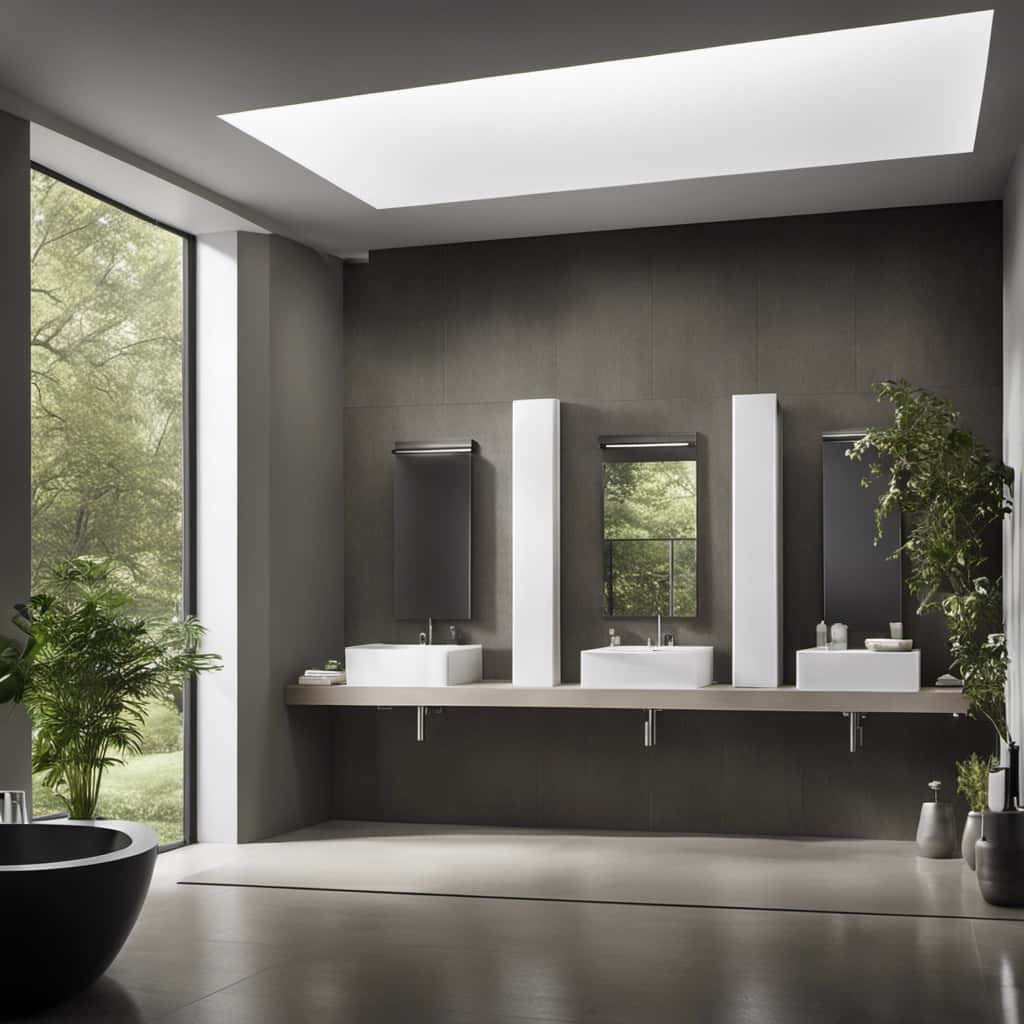
Are There Any Alternative Methods of Toilet Paper Disposal Commonly Used in Italy?
There are alternative methods of toilet paper disposal commonly used in Italy. Some eco-friendly options include bidets, which provide a more thorough clean, and wet wipes, which can be tossed in a special bin.
Do Public Restrooms in Italy Have Any Specific Rules or Norms That Visitors Should Be Aware Of?
When using public restrooms in Italy, it’s important to be mindful of toilet paper etiquette and maintain cleanliness. Familiarizing yourself with the specific rules and norms will ensure a smooth experience.
Why Is Proper Toilet Paper Disposal Important in Italy?
Proper toilet paper disposal is important in Italy due to the environmental impact of improper disposal. It helps maintain hygiene and prevents clogging of the sewage system. It’s crucial to follow local guidelines and dispose of toilet paper in the appropriate bins provided.
Conclusion
In conclusion, when it comes to toilet paper disposal in Italy, remember to always follow their cultural norms and plumbing system. As the saying goes, ‘When in Rome, do as the Romans do.’
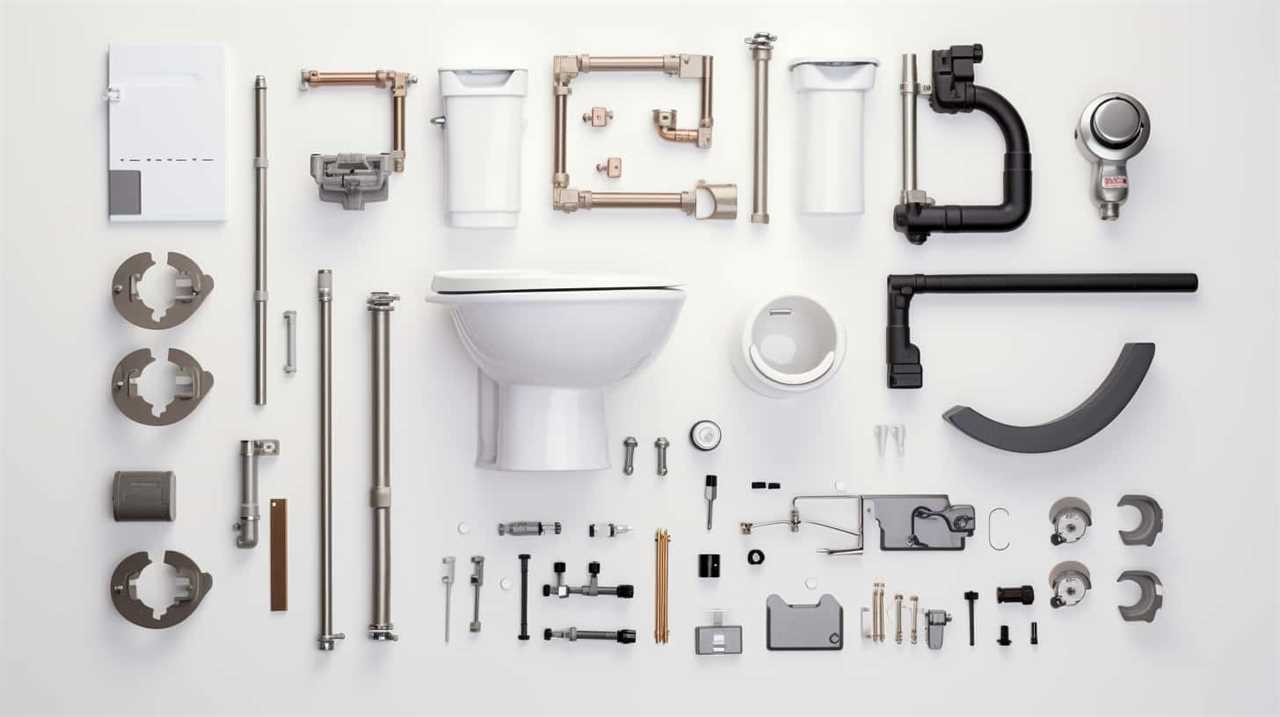
Be mindful of the alternative methods available and always use public restrooms responsibly. By respecting their customs, we can ensure a smooth and pleasant experience while visiting Italy.
So next time you’re in the beautiful country, remember to be considerate and flush the toilet paper in the designated manner.
With an impeccable eye for detail and a passion for bathroom-related, Ava leads our editorial team gracefully and precisely.
Under her guidance, Best Modern Toilet has flourished as the go-to resource for modern bathroom enthusiasts. In her free time, you might find Ava exploring antique shops and looking for vintage bathroom fixtures to add to her collection.
FAQ - Advanced Bathroom Queries
Can Wipes Go in the Toilet

Were you aware that flushing wipes down the toilet is the cause of over 90% of clogged pipes in the United States?
We, as a collective, need to understand the impact this seemingly harmless action has on our plumbing systems and the environment.
In this article, we will delve into the consequences of flushing wipes, explore alternative methods, and provide you with the proper disposal techniques.
Let’s educate ourselves and make informed decisions about the safety of flushing wipes.
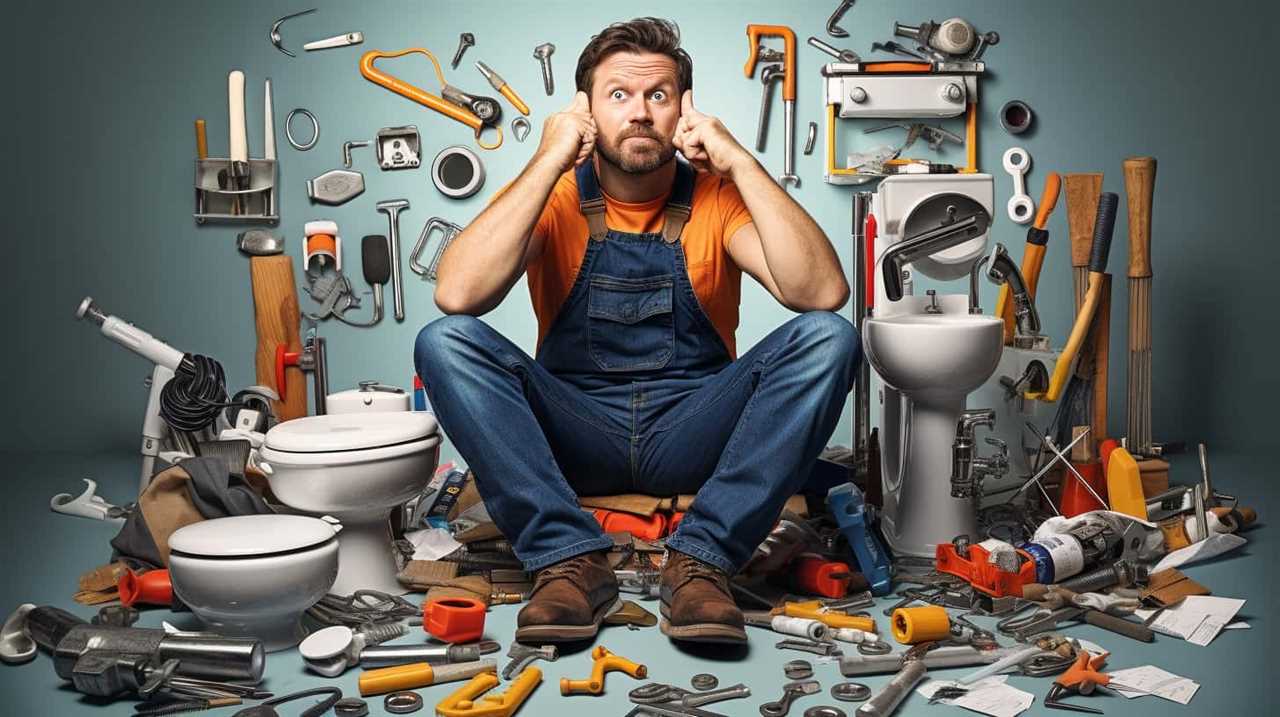
Key Takeaways
- Flushing wipes can cause clogged pipes, leading to expensive plumbing repairs.
- Flushing wipes contributes to marine pollution and harm to marine life and ecosystems.
- Biodegradable and reusable wipes are eco-friendly alternatives to flushing wipes.
- Proper disposal of wipes in the trash can help prevent blockages in the sewage system and protect the environment.
The Impact on Plumbing Systems
In our experience, flushing wipes down the toilet can have a detrimental impact on plumbing systems. When wipes are flushed, they can accumulate and create blockages in the pipes. This can lead to plumbing repairs that are time-consuming and costly.
The fibers in wipes don’t break down as easily as toilet paper, causing them to clump together and form clogs. These clogs can restrict the flow of water, leading to backups and potential flooding. Additionally, the presence of wipes in the pipes can create a breeding ground for bacteria, further exacerbating the problem.
It’s important to understand that the convenience of flushing wipes comes at the expense of potential plumbing issues. Transitioning to the subsequent section, the environmental consequences of flushing wipes will also be explored.
Environmental Consequences of Flushing Wipes
Continuing our exploration of the impact of flushing wipes on plumbing systems, we now turn our attention to the environmental consequences of this practice. Flushing wipes can have severe implications for our marine ecosystems and sewage treatment facilities.

Here are four key reasons why flushing wipes can be detrimental to the environment:
- Marine pollution: Wipes that are flushed down the toilet often end up in our oceans and waterways, contributing to marine pollution. These wipes can harm marine life, such as turtles and seabirds, when they mistake them for food or become entangled in them.
- Clogging sewage treatment facilities: Wipes don’t break down like toilet paper. Instead, they accumulate in sewage systems, leading to blockages and costly repairs for sewage treatment facilities. This can also result in untreated sewage overflow into our rivers and oceans.
- Increased energy and chemical usage: Dealing with wipes in sewage treatment plants requires additional energy and chemical usage, as these facilities need to work harder to break down and remove them. This increased resource consumption can have a negative impact on the environment.
- Microplastic pollution: Wipes often contain synthetic fibers that don’t biodegrade. When they enter water bodies, they break down into microplastics, which are harmful to aquatic life. These microplastics can be ingested by marine organisms, potentially entering the food chain and causing further harm.
It is crucial to avoid flushing wipes down the toilet to protect our marine ecosystems and sewage treatment facilities. Proper disposal in the trash can help mitigate these environmental consequences.
Alternatives to Flushing Wipes
Now, let’s delve into some alternatives to flushing wipes.
When it comes to biodegradable options, there are wipes available on the market that are made from materials that can break down naturally over time. These wipes are designed to be safe for the environment and can be disposed of in a compost bin or in the trash.
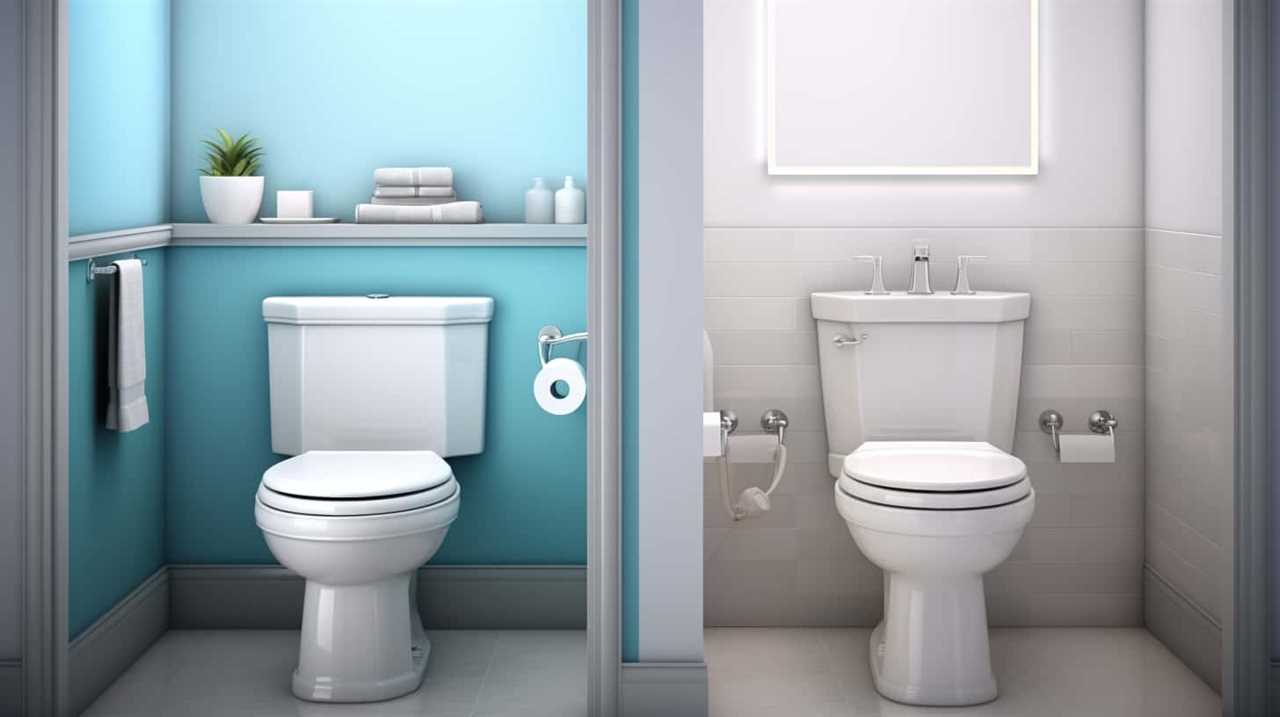
Another alternative is to create your own DIY reusable wipes. By using soft, washable materials such as cotton or bamboo fabric, you can make your own wipes that can be used multiple times before being washed. This not only reduces waste but also saves money in the long run.
Remember to wash these wipes thoroughly after each use to maintain hygiene.
Proper Disposal Methods for Wipes
To properly dispose of wipes, we should consider alternative methods that are safe for the environment and easy to implement. Here are four options to consider:
- Trash Bin: The simplest and most common method is to dispose of wipes in a trash bin. This ensures that they don’t end up in the sewage system and cause blockages.
- Composting: If you’re using biodegradable wipes, you can compost them along with other organic waste. Make sure to check the packaging for information on their biodegradability.
- Specialized Disposal Programs: Some municipalities offer specialized programs for disposing of wipes. These programs collect and dispose of wipes in an environmentally friendly manner.
- Flushable Wipes: If you choose to use flushable wipes, make sure they’re labeled as such and follow the manufacturer’s instructions. However, keep in mind that even flushable wipes can cause issues in the sewage system.
Considering the importance of hygiene practices during COVID-19, it’s crucial to dispose of wipes properly to protect the environment and prevent clogs in the sewage system.
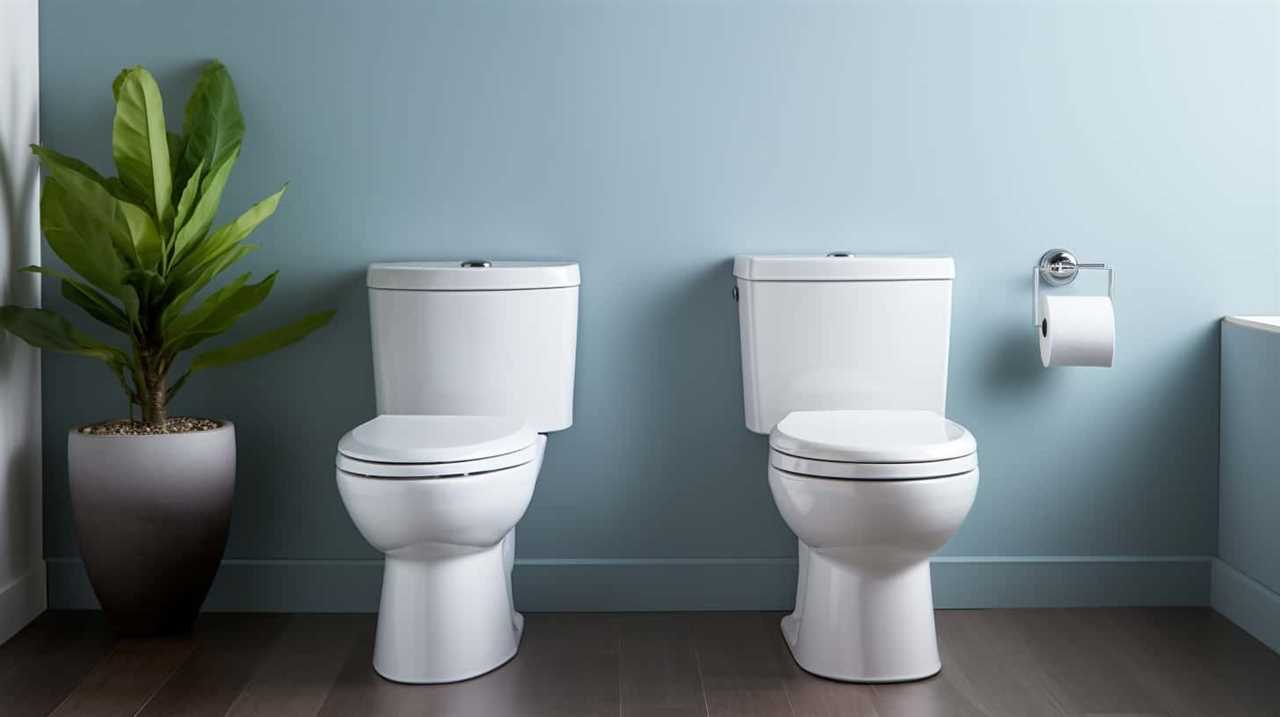
However, is it really safe to flush wipes? Let’s find out in the next section.
Conclusion: Is It Safe to Flush Wipes?
After considering the various disposal methods for wipes, it’s important to assess the safety of flushing them down the toilet. Although convenient, flushing wipes carries certain risks that shouldn’t be overlooked.
One of the main concerns is the potential damage to septic tanks. Unlike toilet paper, wipes don’t break down easily. Instead, they can accumulate in the septic tank and clog the system. This can lead to costly repairs and even complete system failure.
Additionally, wipes may also contribute to sewer backups and overflow in municipal sewer systems, causing environmental contamination and health hazards.
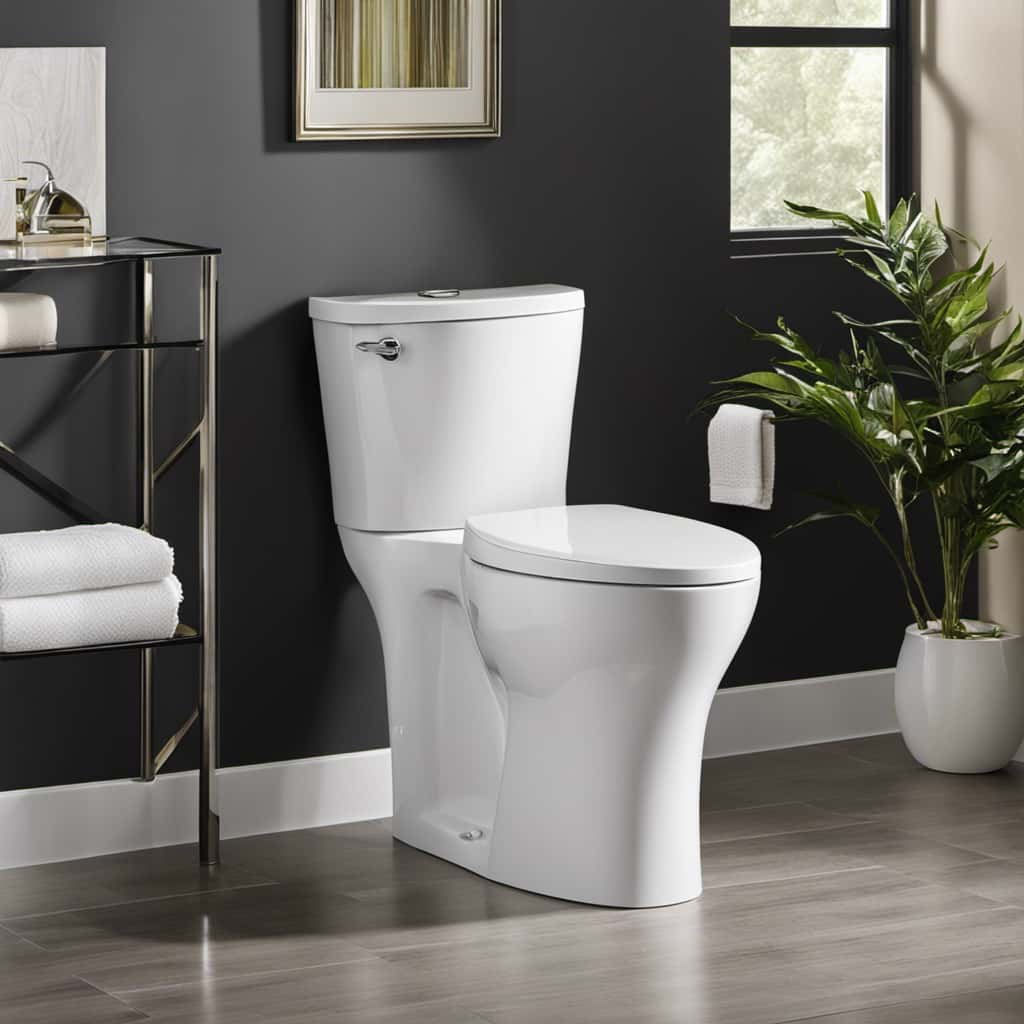
Therefore, it’s generally recommended to avoid flushing wipes and instead dispose of them in the trash to minimize the risks involved and prevent potential septic tank implications.
Frequently Asked Questions
How Do Wipes Affect the Quality of Water in Rivers and Oceans?
The impact of wipes on marine life is significant. Proper disposal methods are crucial to protect the quality of water in rivers and oceans. We must understand the consequences of not disposing of wipes correctly to ensure the health of our ecosystems.
Are All Types of Wipes Equally Harmful to the Environment When Flushed?
Different types of wipes have varying environmental impacts when flushed. Biodegradable wipes are more effective in reducing harm. Flushing wipes, regardless of type, can contribute to clogged pipes and sewage system issues.
Can Flushing Wipes Lead to Blockages in Household Plumbing Systems?
Flushing wipes can wreak havoc on our plumbing. We learned the hard way when our toilet backed up, causing a messy flood. Not only do wipes clog sewage systems, but they also pose potential health hazards.
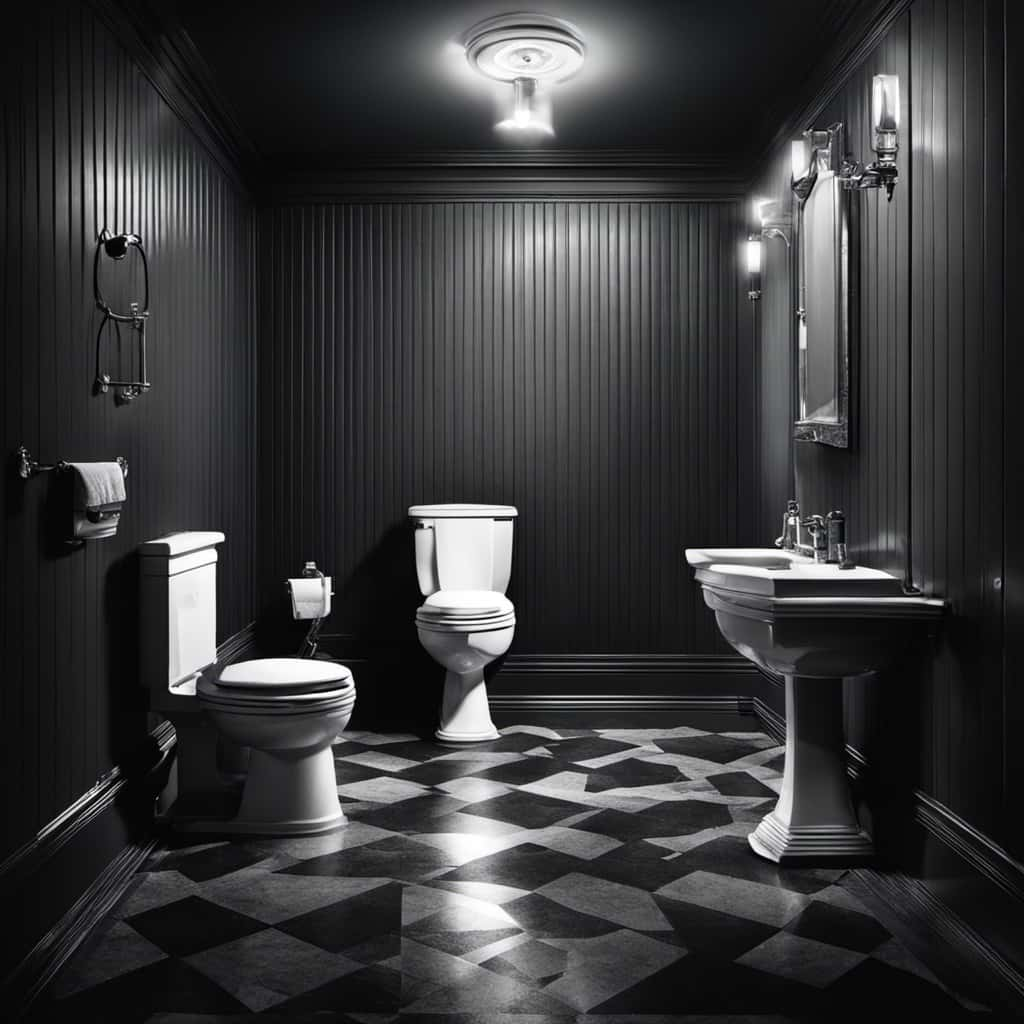
What Are Some Environmentally-Friendly Alternatives to Flushing Wipes?
Eco-friendly options and biodegradable alternatives are available as substitutes for flushing wipes. These alternatives are environmentally conscious and can help prevent blockages in household plumbing systems while still providing the desired functionality.
Are There Any Specific Guidelines for Disposing of Wipes in Landfills?
Guidelines for disposing of wipes in landfills are essential. We must follow proper procedures to avoid environmental harm. Disposing of wipes incorrectly can lead to clogged pipes, sewage backups, and negative impacts on our water systems.
Conclusion
In conclusion, it’s crucial to remember that wipes should never be flushed down the toilet. Despite their convenience, flushing wipes can lead to severe plumbing issues and have detrimental environmental consequences.
It’s essential to explore alternative disposal methods, such as throwing them in the trash or using biodegradable options.

Let’s be mindful of our actions and protect our plumbing systems and the environment for future generations.
With an impeccable eye for detail and a passion for bathroom-related, Ava leads our editorial team gracefully and precisely.
Under her guidance, Best Modern Toilet has flourished as the go-to resource for modern bathroom enthusiasts. In her free time, you might find Ava exploring antique shops and looking for vintage bathroom fixtures to add to her collection.
FAQ - Advanced Bathroom Queries
What Liquids Can Be Flushed Down the Toilet

Here’s what we’re aware of: not all liquids are safe to be flushed down the toilet. But don’t worry, we have the information on what can be safely flushed.
In this article, we’ll break it down for you, using our technical know-how and expertise. From water and urine to toilet paper and liquid waste from cleaning and personal care products, we’ll guide you through the dos and don’ts of flushing liquids.
Get ready to master the art of proper toilet liquid disposal!
Key Takeaways
- Water, urine, and toilet paper are the only liquids that can be safely flushed down the toilet.
- Flushing harmful liquids down the toilet can lead to water pollution, contamination of water sources, harm to aquatic life, and sewer system blockages.
- Liquids such as cooking oil and grease, medications and drugs, paint and solvents, and cleaning chemicals should never be flushed down the toilet.
- Proper disposal methods for liquids include utilizing recycling centers, contacting waste management authorities for guidance, participating in community collection events, and using sealed containers or absorbent materials before disposal.
Water
We can flush large quantities of water down the toilet without causing any harm to the plumbing system. Toilet water, which is essentially clean water, poses no threat to the pipes or the overall hygiene of the toilet. This is because the plumbing system is designed to handle the volume and flow of water during the flushing process.
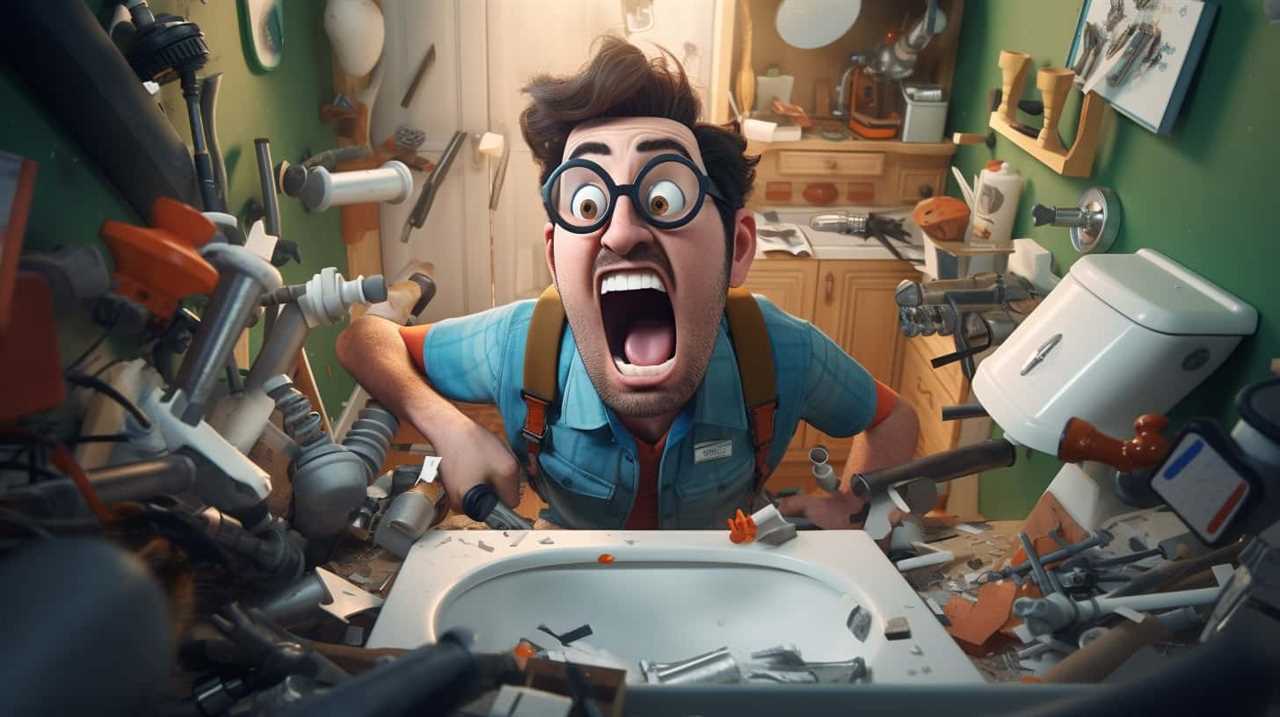
Water is an essential element in maintaining toilet hygiene, as it helps in effectively rinsing away waste and preventing any unpleasant odors. Additionally, the force of the water during flushing aids in keeping the toilet bowl clean and free from any residue.
Therefore, when it comes to toilet hygiene, water is a safe and necessary liquid that can be flushed down the toilet without any concerns.
Urine
To maintain proper toilet hygiene, we can safely flush urine down the toilet. Urine is a waste product produced by the kidneys, consisting mainly of water and dissolved metabolic waste. It’s generally sterile and poses no significant risk to the environment or public health when flushed down the toilet. In fact, flushing urine helps to prevent odors and maintain a clean and hygienic toilet environment.
However, it’s important to note that if someone has a urinary tract infection (UTI), it’s advisable to seek medical attention and follow the prescribed treatment. UTIs can be caused by bacteria and flushing urine infected with bacteria may contribute to the spread of infection.
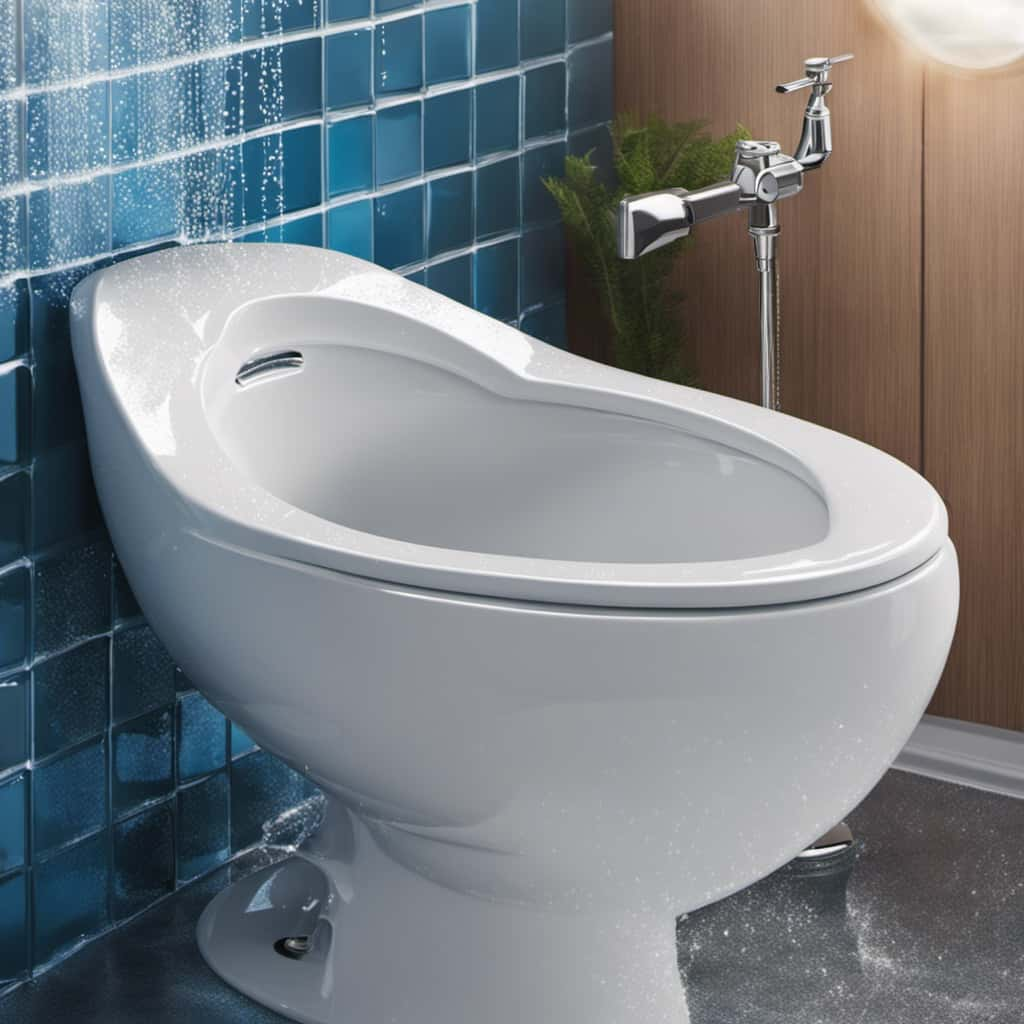
Now, let’s move on to the next essential topic of discussion: toilet paper.
Toilet Paper
Moving on from the previous subtopic of urine, let’s now discuss toilet paper and its role in maintaining proper toilet hygiene. Toilet paper is an essential item in every bathroom, and choosing the right brand is crucial. Here are four important factors to consider when selecting toilet paper:
- Softness: Look for brands that offer a soft and gentle texture to avoid any discomfort during use.
- Strength: Opt for toilet paper that’s strong and durable to prevent tearing or breakage.
- Absorbency: Consider brands that offer excellent absorbency for efficient cleaning and reduced usage.
- Eco-Friendliness: Explore toilet paper alternatives made from recycled materials or bamboo, which are more sustainable options.
Liquid Waste From Cleaning Products
After considering the factors for selecting the right toilet paper, let’s now turn our attention to the proper disposal of liquid waste from cleaning products. When it comes to liquid waste from cleaning products, it is important to be mindful of the impact on the environment. Many conventional cleaning products contain harmful chemicals that can pollute water systems and harm aquatic life. To minimize the negative effects, it is essential to explore eco-friendly alternatives and adopt proper disposal methods. Here is a table highlighting some eco-friendly alternatives and proper disposal methods for liquid waste from cleaning products:
| Eco-friendly Alternatives | Proper Disposal Methods |
|---|---|
| Use natural cleaning products made from plant-based ingredients | Dispose of liquid waste at designated collection points |
| Make your own cleaning solutions using vinegar, baking soda, and lemon juice | Avoid pouring cleaning product waste down the drain |
| Look for cleaning products with eco-label certifications | Follow local regulations for hazardous waste disposal |
| Use microfiber cloths and reusable mop pads instead of disposable wipes | Recycle empty cleaning product containers |
Liquid Waste From Personal Care Products
When it comes to liquid waste from personal care products, we must consider the proper disposal methods to minimize environmental impact. Here are four important points to keep in mind:
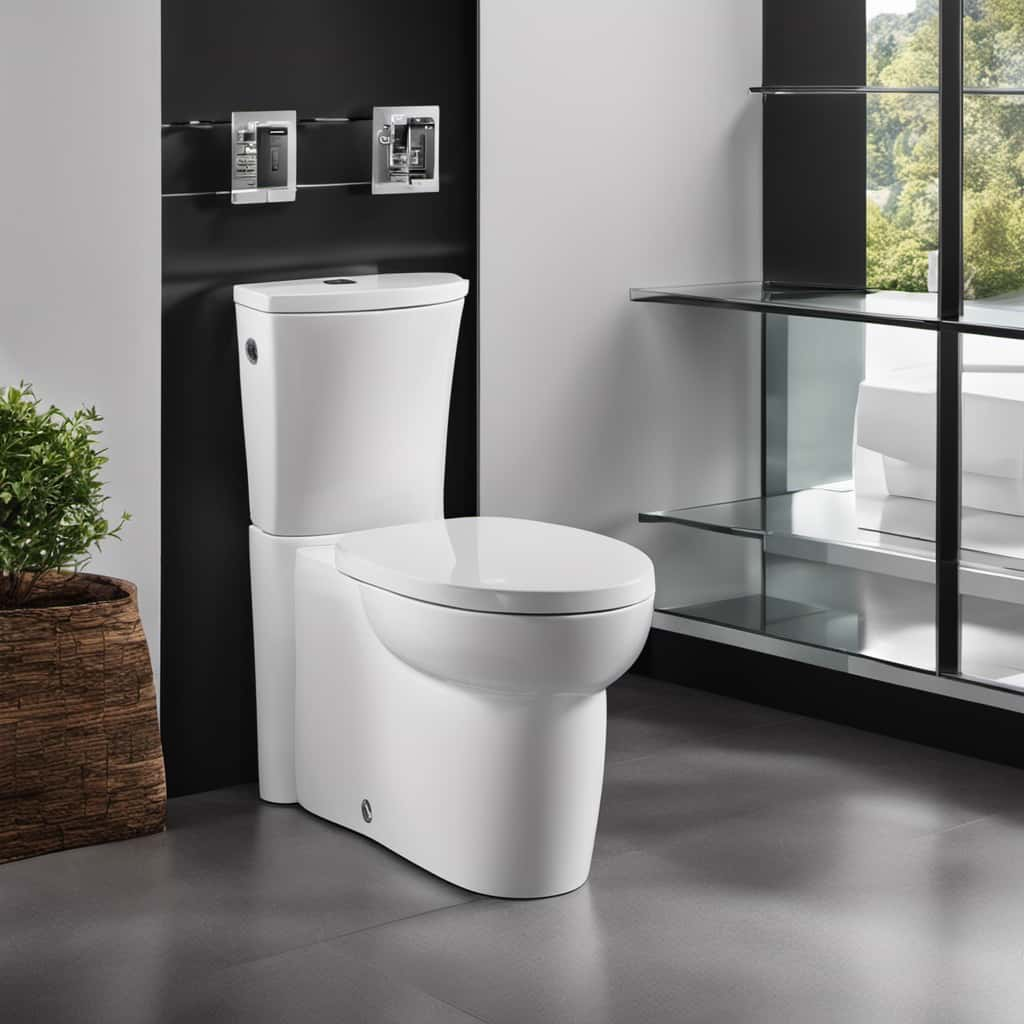
- Hazardous chemicals: Many personal care products contain hazardous chemicals such as parabens, phthalates, and triclosan. These substances can be harmful to aquatic life and may disrupt ecosystems if they enter water bodies.
- Environmental impact: Improper disposal of personal care product waste can result in contamination of water sources, affecting both human health and wildlife. It’s crucial to dispose of these liquids responsibly to minimize their impact on the environment.
- Proper disposal methods: Check local regulations for guidance on disposing of personal care product waste. In many cases, it’s best to minimize waste by using products sparingly and opting for environmentally friendly alternatives. When disposing of liquid waste, consider recycling options or take it to a designated hazardous waste collection facility.
- Consumer responsibility: As consumers, we’ve a role to play in minimizing the environmental impact of personal care products. Choosing products with eco-friendly formulations and packaging, as well as properly disposing of any liquid waste, can help protect the environment for future generations.
Frequently Asked Questions
Can I Flush Coffee Down the Toilet?
We can’t flush coffee down the toilet. It’s best to dispose of coffee grounds in alternative methods, like composting or throwing them in the trash. Flushing coffee can clog pipes and cause damage.
Is It Safe to Flush Expired Medication Down the Toilet?
Flushing expired medication down the toilet is not safe. It can have detrimental environmental impacts. Remember, "An ounce of prevention is worth a pound of cure." Properly dispose of medication through take-back programs or at designated collection sites.
Can I Dispose of Bleach by Flushing It Down the Toilet?
Flushing bleach down the toilet is not a safe way to dispose of it. The environmental impact of flushing bleach includes potential contamination of water sources and harm to aquatic life.
Is It Okay to Flush Cooking Oil or Grease Down the Toilet?
Flushing cooking oil or grease down the toilet is a big no-no. It can clog the pipes and cause serious plumbing issues. Proper grease disposal involves cooling, solidifying, and disposing of it in the trash.

Can I Flush Pet Waste, Such as Cat Litter, Down the Toilet?
When considering toilet safety precautions, it’s important to note that flushing cat litter down the toilet is not recommended. Cat litter can cause clogs and damage to plumbing systems. Dispose of it properly in the trash instead.
Conclusion
In conclusion, it’s important to only flush water, urine, toilet paper, and liquid waste from cleaning and personal care products down the toilet. Flushing other liquids can cause clogs and damage to the plumbing system.
Did you know that approximately 75% of plumbing issues are caused by improper flushing? Imagine the frustration of dealing with a clogged toilet and the costly repairs that can follow.
Let’s be mindful of what we flush to avoid unnecessary plumbing problems.
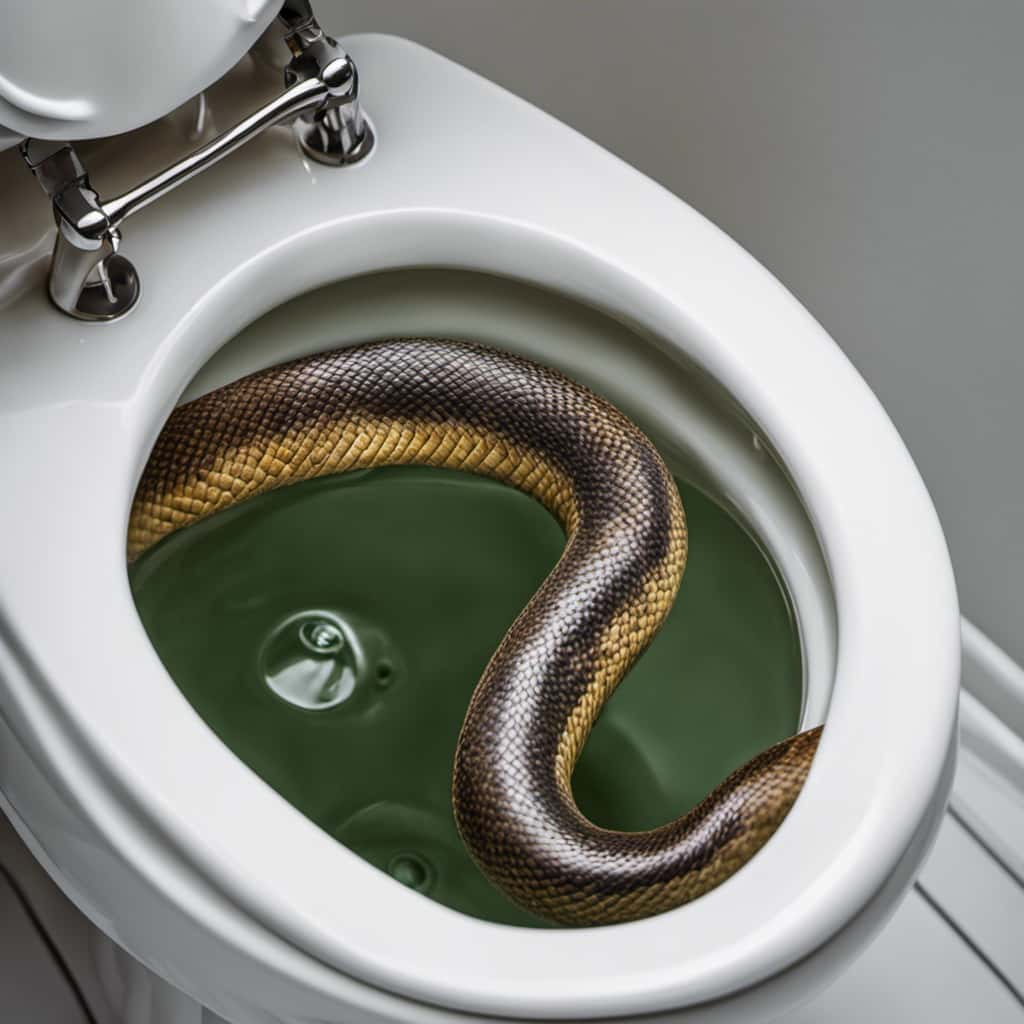
With an impeccable eye for detail and a passion for bathroom-related, Ava leads our editorial team gracefully and precisely.
Under her guidance, Best Modern Toilet has flourished as the go-to resource for modern bathroom enthusiasts. In her free time, you might find Ava exploring antique shops and looking for vintage bathroom fixtures to add to her collection.
-

 Guides3 months ago
Guides3 months agoHow Smart Toilets Can Help Detect Early Signs of Health Issues
-

 Guides3 months ago
Guides3 months agoThe Future of Public Restrooms: Smart Toilets in Airports, Malls, and Stadiums
-

 Guides3 months ago
Guides3 months agoSmart Toilets in Japan: What We Can Learn From the Leaders in Toilet Tech
-

 Guides2 months ago
Guides2 months agoThe Rise of Smart Toilet Apps: Tracking Health and Habits on Your Smartphone
-

 Guides2 months ago
Guides2 months agoThe Future of Bathroom Cleaning: How Smart Toilets Are Making Chores Obsolete
-

 Guides3 months ago
Guides3 months agoSmart Toilet Regulations and Standards: Navigating the Legal Landscape
-

 Guides2 months ago
Guides2 months agoSmart Toilets in Healthcare: Improving Patient Care and Monitoring
-

 Guides3 months ago
Guides3 months agoThe Impact of Smart Toilets on Real Estate Value and Home Sales






